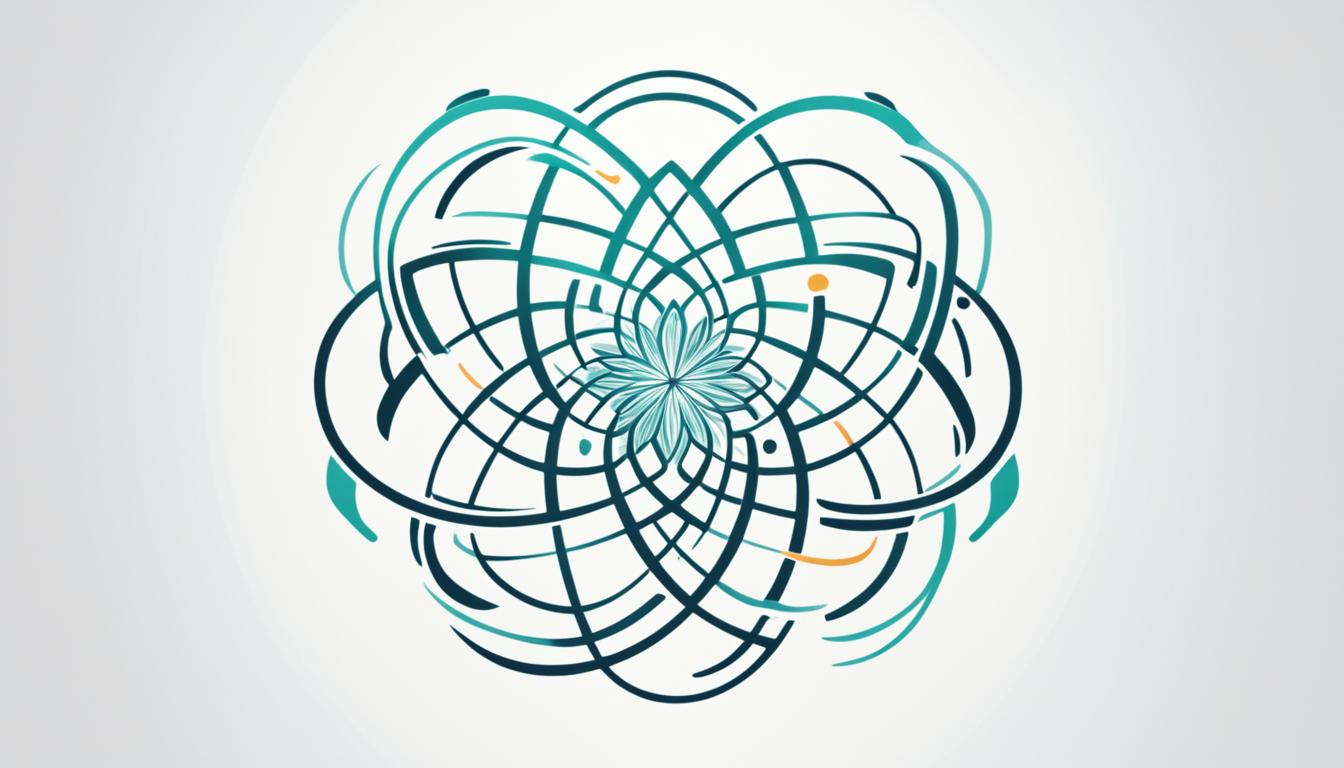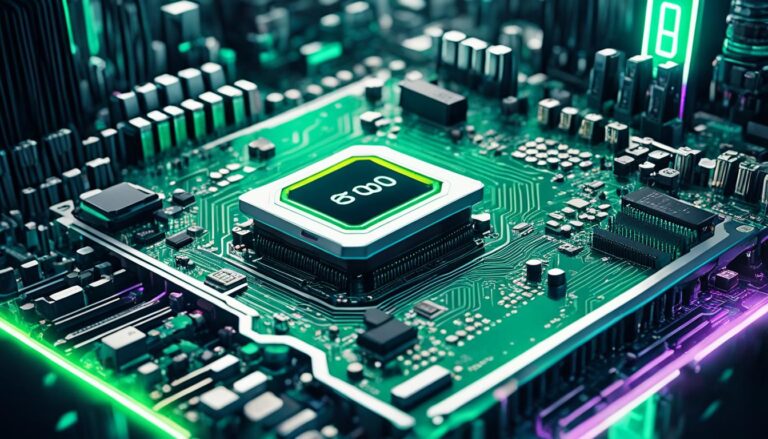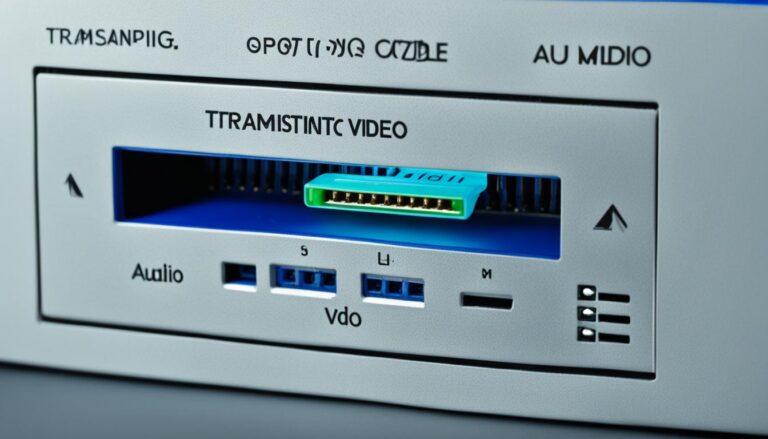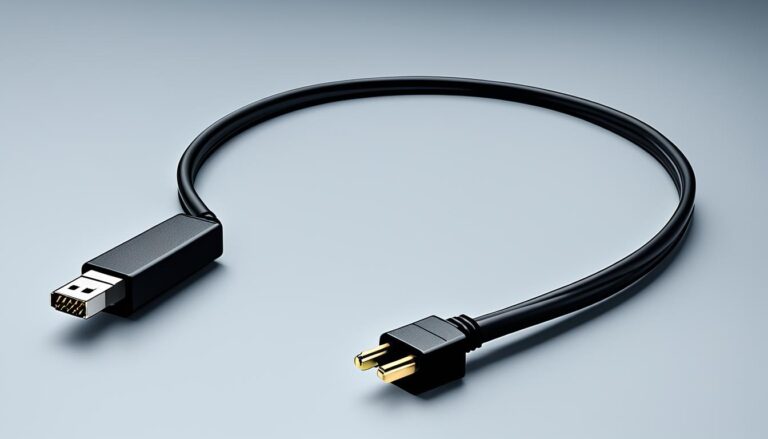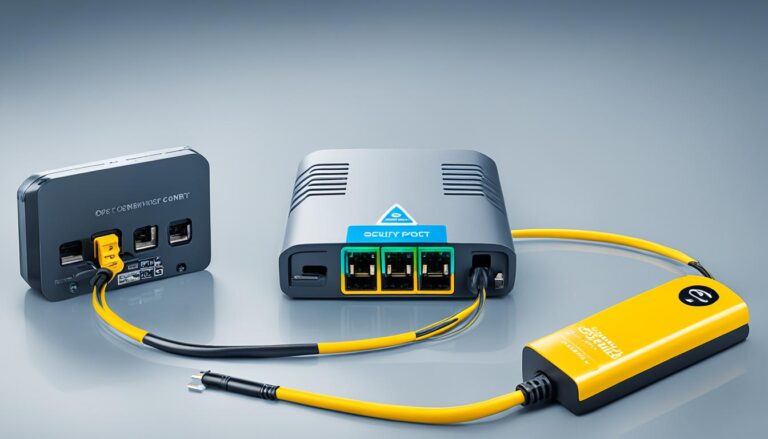The symbol for connector looks like a circle in a flowchart. It shows the flow continuing through different charts or pages. It is used in complex flowcharts to mark where the flow pauses and then continues.
Electronics, computing, and diagrams use this symbol a lot. It helps maintain smooth flow and communication. This symbol is key in these areas as it marks flow continuation and transitions between sections.
Connectors are crucial in electronics and computing for signal, data, and power flow. They help connect components and keep circuits and networks running smoothly. The connector symbol is also used in data flow diagrams and process mapping, making it easier to communicate complex processes.
Understanding the symbol for connector matters a lot for professionals. They should explore what it means and how it’s used in electronics, computing, and diagrams. This knowledge makes creating, interpreting, and communicating through diagrams easier.
Understanding Flowchart Symbols and Their Importance
Flowchart symbols make process maps and data flow diagrams clear and useful in many industries. It’s important to know what each symbol means. This ensures we understand complex processes correctly. Two symbols, the process symbol and the decision symbol, are especially important.
The process symbol is key in flowcharts. It looks like a rectangle with rounded corners and shows a single action or step. It makes the steps clear and shows how one leads to the next. This makes the flow of the process easy to follow.
The decision symbol looks like a diamond. It marks a place where the process could follow different paths based on a decision or condition. This symbol makes flowcharts more useful for making decisions. It shows different possibilities based on certain conditions.
“Understanding the role and significance of flowchart symbols, such as the process symbol and decision symbol, is essential in process mapping and diagram creation.” – John Smith, Flowchart Expert
Common Flowchart Symbols
Besides the process and decision symbols, many other flowchart symbols also play specific roles. Here are some common ones:
- Start and end symbols: Indicate the beginning and conclusion of the process.
- Input/output symbols: Represent data input or output from a process.
- Connector symbols: Join different parts of a flowchart or link to another chart or page.
- Delay/wait symbols: Highlight a temporary pause or waiting period in the process.
- Loop symbols: Depict iterative or repetitive actions within the process flow.
Knowing what these symbols mean helps in making flowcharts that are easy to understand.
| Symbol | Meaning |
|---|---|
| Process symbol | Represents an action or step within the process. |
| Decision symbol | Signifies a branching point based on specific conditions or criteria. |
| Start symbol | Indicates the beginning of the process flow. |
| End symbol | Represents the conclusion or endpoint of the process flow. |
| Input/output symbol | Denotes data input or output from the process. |
| Connector symbol | Joins different parts of the flowchart or links to another chart or page. |
| Delay/wait symbol | Highlights a temporary pause or waiting period in the process. |
| Loop symbol | Depicts iterative or repetitive actions within the process flow. |
The Origins and History of Flowchart Symbols
Flowcharts for business processes started in the 1920s and 30s. Frank and Lillian Gilbreth introduced process charts. Frank is seen as the inventor of flowcharts. Their work introduced standard flowchart symbol definitions. Since the 1940s, flowcharts have been key for documenting and enhancing business processes.
Frank and Lillian Gilbreth were experts in time and motion study. They aimed to boost efficiency and productivity in industries. They created process charts to show and analyze workflows visually. This helped organisations find problems, make processes smoother, and boost performance.
The Gilbreths’ process charts stood out for their simplicity and effectiveness. They used shapes like rectangles for tasks, arrows for work flow, and circles, known as connector symbols, for continuing flow across multiple charts.
By creating standard symbols, the Gilbreths made complex processes easier to understand and share. Their innovations changed industrial engineering. They also set the groundwork for using flowcharts in various fields, such as manufacturing, software development, and project management.
Flowchart symbols have grown and improved over time. Yet, the basic symbols and ideas from Frank and Lillian Gilbreth stay central to flowcharting.
Flowcharts as a Tool for Business Improvement
Flowcharts became more popular in the 1940s, thanks to scientific management and quality control methods. The US Armed Forces and manufacturers started using flowcharts to make processes better, find issues, and increase productivity.
Flowcharts map out processes and decisions clearly. They show how work happens in an organisation. This clear view helps identify points to improve, makes workflow more effective, and assists in training new staff.
Flowcharts are still very useful for businesses today. They help visualise and examine complex processes. They also help find problems, make operations more efficient, and promote ongoing improvement.
Let’s explore the key flowchart symbols and their role in effective process mapping and creating diagrams.
Tips for Organizing and Creating Effective Flowcharts
To make your flowcharts clear and useful, focus on simple organization. Here are some key tips to help you communicate your ideas well through flowcharts:
- Use Consistent Symbols and Lines: It’s crucial to use the same symbols and lines in your flowchart. This makes it easier for readers to follow along. Opt for symbols that are easy to recognize and use arrows to show direction clearly.
- Keep it to One Page: Aim to fit your flowchart on a single page. This makes it simpler to understand at a glance. If it gets too complex, break it into sections or use separate flowcharts for different stages.
- Structure from Left to Right or Top to Bottom: Arrange your flowchart logically, either left to right or top to bottom. This approach guides the reader smoothly through the flowchart. Keeping the direction consistent improves readability.
- Start with a Flowchart Template: Starting with a template can make organizing easier. Templates offer a ready-made structure, saving you time. Many tools and websites provide customizable templates for any need.
Following these suggestions and using consistent symbols and lines will help you make effective flowcharts. Whether for complex systems or simple workflows, organized flowcharts are essential for clear communication.
Flowchart Symbols in Electronic Circuit Diagrams
In electronic circuit diagrams, symbols stand for different parts and functions. These symbols help us understand and work with electronics. Let’s look at some common electronic circuit symbols:
| Symbol | Description |
|---|---|
| Wires: Represent the connections between components | |
| Cells/Batteries: Provide electrical energy | |
| DC and AC Power Supplies: Supply direct current or alternating current respectively | |
| Fuses: Protect circuits from excessive current | |
| Transformers: Change voltage levels | |
| Grounds: Provide a reference voltage | |
| Transducers: Convert energy from one form to another | |
| Lighting Lamps: Produce light in the circuit | |
| Electric Motors: Convert electrical energy into mechanical energy | |
| And many more… |
Every symbol has a key role in a circuit diagram. By knowing these symbols, both professionals and hobbyists can identify and use electronic parts. This ensures circuits work correctly.
Understanding the Symbol for Resistor and Variable Resistor
Resistors are key in controlling electric current in circuits. To use them well, knowing their symbols is crucial. It helps us read circuit diagrams.
The resistor symbol shows up as a zigzag or a rectangle with lines inside. These symbols make it easy to spot resistors in schematics.
Resistors are all about resistance, which we measure in Ohms (Ω). You can find a resistor’s value through the resistor color code.
The resistor color code uses colored bands on the resistor. Each color stands for a number or multiplier. This helps figure out the resistor’s value and quality.
When you need to change resistance in a circuit, you use variable resistors. Components like rheostats and potentiometers come with their own symbols.
Understanding resistor symbols and the color code is vital. It lets us identify and use resistors the right way in circuits. This ensures everything works as it should.
Resistor Symbol Examples:
| Symbol | Description |
|---|---|
| Resistor symbol represented by a zigzag line. | |
| Resistor symbol represented by a rectangle with a small line inside. |
Variable Resistor Symbol Examples:
| Symbol | Description |
|---|---|
| Variable resistor symbol represented by a zigzag line with an arrow for adjustability. | |
| Variable resistor symbol shown as a rectangle with an arrow for adjustability. |
Exploring Capacitor, Diode, and Transistor Symbols in Circuits
In electronic circuits, we use specific symbols for different parts. Capacitors, diodes, and transistors are key. Each has a symbol that shows its function.
Capacitor Symbol
Capacitors are important because they store electric charge. Their symbol looks like two lines parallel to each other. This represents plates that are close together.
Diode Symbol
Diodes help electric current flow in one direction only. Their symbol has an arrow. It points the way current can move through the diode.
Transistor Symbol
Transistors, used for boosting or changing electronic signals, have varying symbols. For example, bipolar junction transistors (BJTs) or field-effect transistors (FETs) have different symbols. They might look like structures with three or four legs.
Knowing these symbols is key for working with electronic circuits. If you understand them, you can read circuit diagrams better. This helps in fixing problems, designing, and building electronics more accurately.
Conclusion
The connector symbol is key in flowcharts. It lets the flow continue across several charts or pages. Professionals in electronics, computing, and diagrams must know these symbols well. Learning about the connector and other symbols helps in making clear process maps and data flow diagrams.
FAQ
What does the symbol for connector represent in flowcharts?
In flowcharts, the connector symbol looks like a circle. It shows where the flow continues on different charts or pages. This symbol is handy for complex flowcharts. It shows where the flow stops on one chart and starts on another.
Why are flowchart symbols important?
Flowchart symbols help make process maps and diagrams clear and useful. They carry lots of meaning. This makes them vital for mapping processes and creating diagrams.
Who are the creators of flowcharts?
Frank and Lillian Gilbreth introduced the first standard symbols for flowcharts. They invented flowcharts in the 1920s and ’30s.
How can I create clear and effective flowcharts?
For clear flowcharts, use consistent symbols, lines, and text. It’s best to keep your flowchart on one page. You should structure it from left to right or top to bottom. Starting with a template can help organise your flowchart too.
What symbols are used in electronic circuit diagrams?
Electronic circuit diagrams use symbols for wires, cells, and batteries. They also use symbols for power supplies, fuses, and transformers. Other symbols include grounds, transducers, lighting lamps, and motors. Each symbol represents a different part or function in the circuit.
How are resistors represented in electronic circuits?
Resistors are shown as a zigzag line or a rectangle. Inside they might have one or two small lines. Their value, tolerance, and quality are indicated by a color code. Variable resistors, like rheostats and potentiometers, have special symbols.
What symbols represent capacitors, diodes, and transistors in circuits?
Capacitors are shown with two parallel lines. Diodes have an arrow that points to the current flow direction. This means they let current flow one way. Transistors, used to amplify current, have different symbols based on their type.
